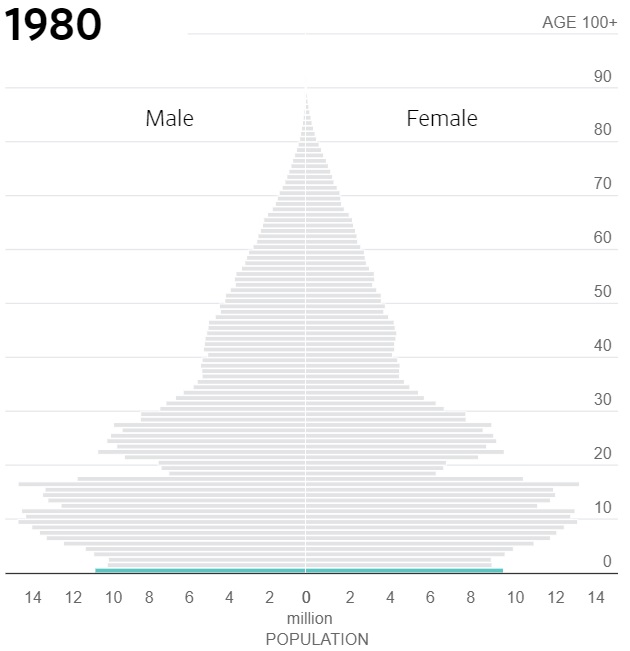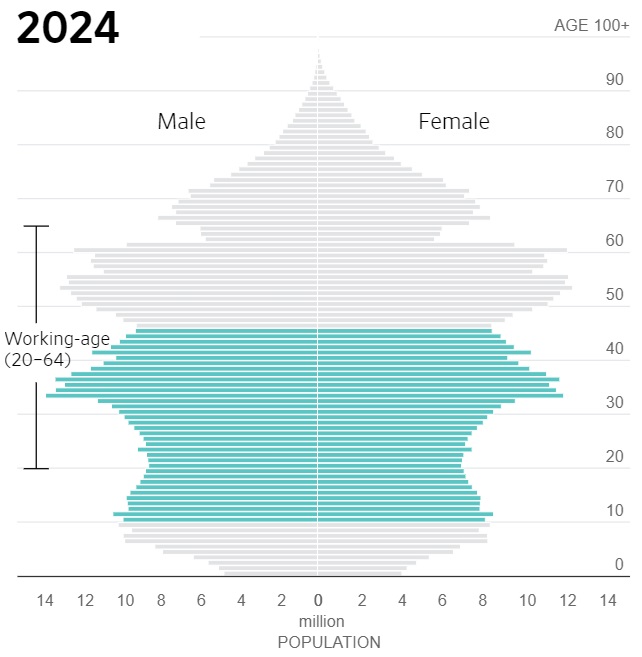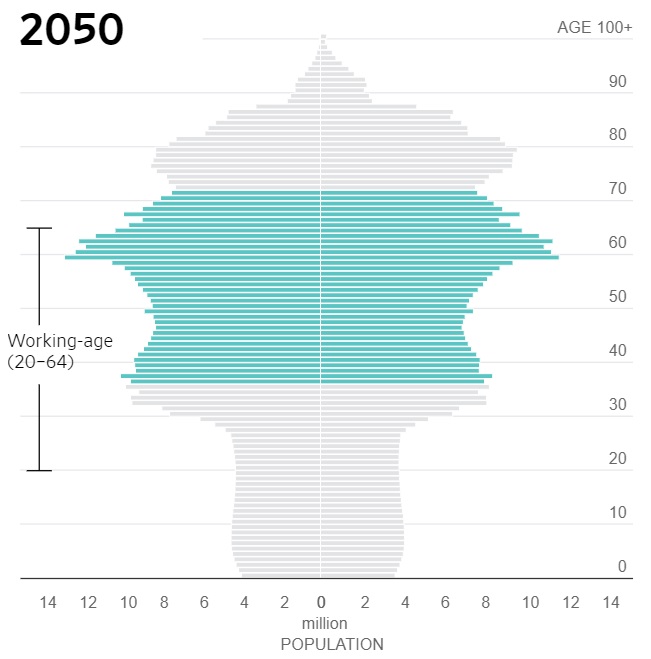I’m in China this week, teaching about fiscal policy, convergence theory, and inequality at Northeastern University in Shenyang.
So it’s a good opportunity to write about some pluses and minuses of Chinese economic policy.
We’ll start this series by looking at demographics, which almost surely is the biggest long-run challenge for Chinese policymakers.
How big a challenge? Check out these three charts from a recent report in the Wall Street Journal by Liyan Qi and Ming Li.
In 1980, China had a relatively normal population pyramid.
But over the next four decades, people started living longer and having fewer children.
As a result, the population pyramid today looks more like a cylinder.
But what’s especially shocking is that the country’s population profile by 2050 will be somewhat akin to an upside-down pyramid.
Why are these population shifts a big long-run challenge for China?
For the simple reason that even a modest-sized welfare state is only feasible if there is a traditional population pyramid, featuring ever-larger cohorts of young workers to finance the benefits promised to older workers.
That’s not the case in China (or in Europe, or in the United States).
Here are some excerpts from the article.
A United Nations forecast published Thursday shows how quickly China is aging, a demographic crunch that the U.N. predicts will cut China’s population by more than half by the end of the century. …Now, slowing economic growth and demographic changes feed off each other for a gloomy outlook. …By 2050, the U.N. now projects 31% of Chinese will be 65 or older. By 2100, the share will be 46%, approaching half of the population. In the U.S., the share is expected to be 23% and 28%, respectively. …The old-age support ratio, a rough indicator of the number of workers for each retiree…, is projected to decline from more than four now to fewer than two in 2050… It will likely reach one worker per retiree by the end of the century.
The takeaway from this data and analysis is that massive demographic change is occurring and China needs “funded” systems rather than tax-and-transfer entitlements.
And, at the risk of stating the obvious, we need similar reforms in the United States.
P.S. The Chinese government has taken some small steps in the right direction.



No comments:
Post a Comment